Potica
January.
Generally quiet, cold, and frugal, it’s never been my favorite month. The anticipation of the holidays has passed, and the next break seems distant. But I’m still juuuuuuuuust close enough to December that I am still savoring the memories of a holiday baking project conducted in my parents’ kitchen.
Potica (pronounced po-tee-tza) is one of those recipes that my grandma made rarely but talked of often as a favorite family treat. It apparently is known by many names and varies dramatically depending on which eastern European recipe you happen to be following. To create this spiral nut bread, a sweet dough is rolled extremely thin and slathered with a mixture of butter, pecans, and sugar before it bakes into lovely loaves, fitting for a simple breakfast or a stunning gift.
It is, however, a lengthy process. Once the dough comes to just the right consistency, it must raise three times before it is rolled out thin enough to be translucent. Needless to say, it is a project perfect for a family ready to lend a helping hand.
I spend a lot of time cooking and baking on my own. And that’s normally the way I like it, especially when I am stopping to take photo after photo from various points in my kitchen. But it is lovely, too, to have these opportunities to tackle large projects with my family.
And what a project it is. My sister and I actually had time to leave the house, go Christmas shopping, and drive home before the dough’s three raises were complete.
Once the dough was ready for rolling, it had to be rolled VERY thin. We split the dough in two, and even then, it took up most of the island in our kitchen. I don’t even think I could make this in my apartment… circling around the island with a rolling pin is much easier than working against a wall. It’s also even easier when dad took half the dough and rolled it out himself!
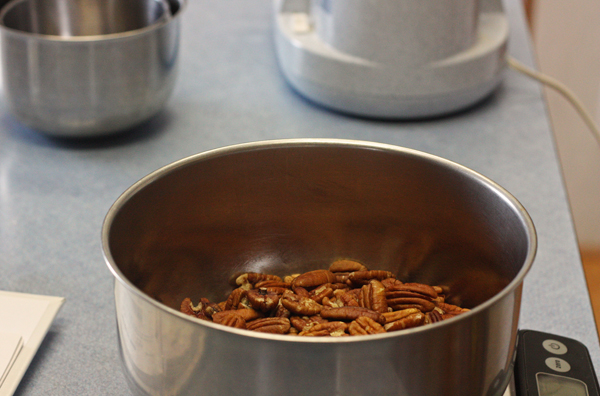
Meanwhile, the sweet, nutty filling came together very quickly. We sent some pecans for a whirl in the food processor and a bath in a pot of sugar, then spread it evenly across the vast expanse of dough on the counter.
Once that was spread (and the spoon has been thoroughly and completely licked clean), we carefully rolled up and sliced into loaves, then waited once more for it to rise before baking.
Yes. This it was sort of a day-long process.
But the result made the time and effort very worthwhile.
The potica is gently sweet with a subtle crunch and makes a pretty little statement on a plate. But the truest treasure lies in the memories of making it. Can you do it alone? Sure. But it’s better to round up some friends or family and savor it together.
Potica
From Emma H. in Recipes & Rememberences
Makes 4 standard loaves
A note on flour: You may notice there is quite a large range on the quantity of needed flour. The proper consistency of this dough is tricky to obtain, and weather and humidity can dramatically affect the amount of flour needed. My advice? Use a light hand and add slowly to ensure you don’t add too much!
For the Dough
1 c warm water
1 1/2 T yeast dissolved in 3 T warm water
1 T salt
1 c white sugar
1/2 c butter or margarine, melted
1 c evaporated milk (unsweetened)
3 eggs
5-8 c all-purpose flour
Thoroughly grease a large bowl with a lid and set aside.
In a standing mixer fitted with paddle attachment, beat together water, yeast, salt, sugar, butter, evaporated milk, and eggs. Swap our the paddle attachment for the dough hook and begin adding flour, one cup at a time, and blend well between each. Continue adding flour, slowly, until dough is climbing the dough hook and is only slightly sticky to the touch. Transfer dough to the greased bowl and cover with lid. Place dough in a warm place until it rises.
After dough has risen, remove it from the bowl and knead on a lightly floured surface for 5-10 minutes. Return to bowl and cover, allowing it to rise again. Remove once more and knead 5-10 more minutes, then allow dough to rise in the bowl once more.
During the last rise, prepare the filling as directed below.
For the Filling
1 lb chopped pecans
1 c hot milk
6 T butter
1 c sugar
2 eggs, fairly beaten
1/4 tsp salt
1/2 tsp vanilla
1/2 tsp cinnamon
In a large pot, combine nuts, milk, butter, sugar, and eggs and bring just to a boil. Remove from heat and add salt, vanilla, and cinnamon. Adjust seasoning to taste as desired. Mixture should be thin enough to spread, closer to oatmeal than peanut butter.
Constructing Loaves
Grease 4 standard loaf pans and set aside.
Flour a large surface. Lightly knead the dough and then cut it in half. Return half of the dough to the bowl. Roll out dough as thin as possible, no thicker than 1/4″ and preferably thin enough to read through. Using a spatula, gently spread half of the nut mixture evenly over the rolled out dough. Starting on one of the long sides of the dough, carefully roll the dough in on itself. Once the roll is formed, gently press in on the ends to compress the roll. Cut in half and place each section into a loaf pan. Repeat process with remaining dough and nut mixture until 4 loaves are formed.
Preheat oven to 300 °F. While oven preheats, place loaf pans on top of stove and cover with a cloth to allow loaves to rise. Once dough stays indented when pinched, place loaves in the oven on a middle rack. Bake for one hour, watching closely near the end to ensure the crust does not burn.
Remove from oven when crust is golden brown. Run a knife around the edges of the pans to loosen loaves and place on a cooling rack. If desired, lightly brush the top of each loaf with butter. Once loaves have cooled, wrap tightly in aluminum foil. Serve cool or warm. Loaves can also be stored in the freezer for later use.

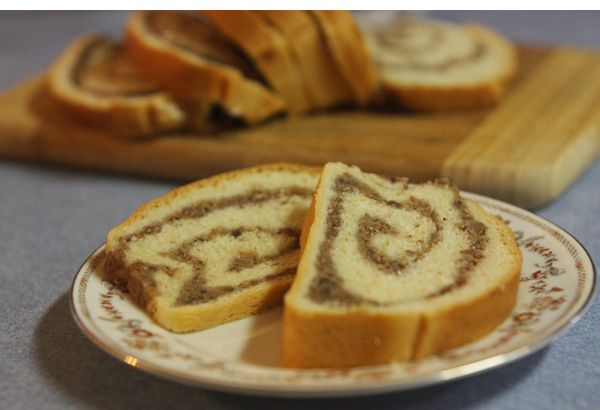
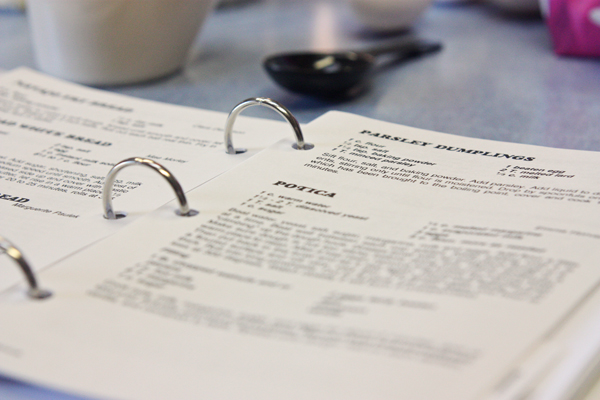
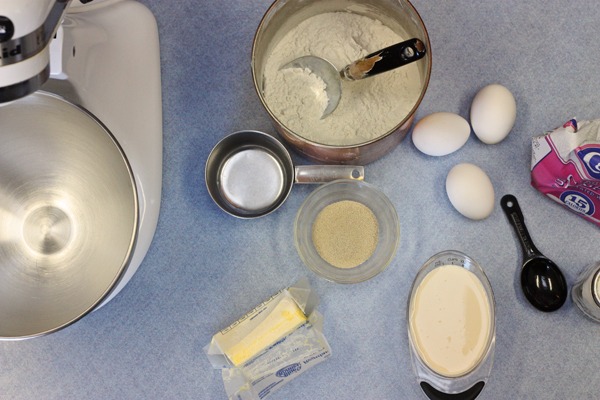
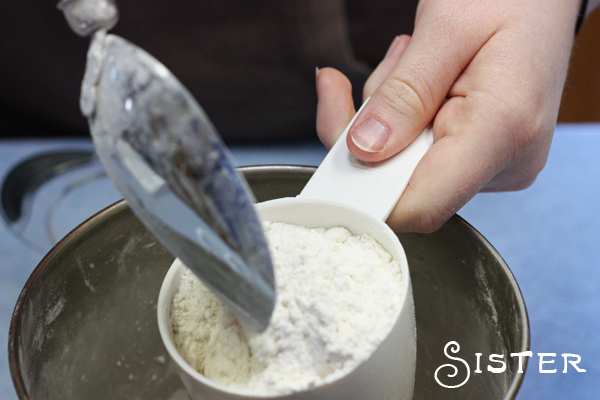
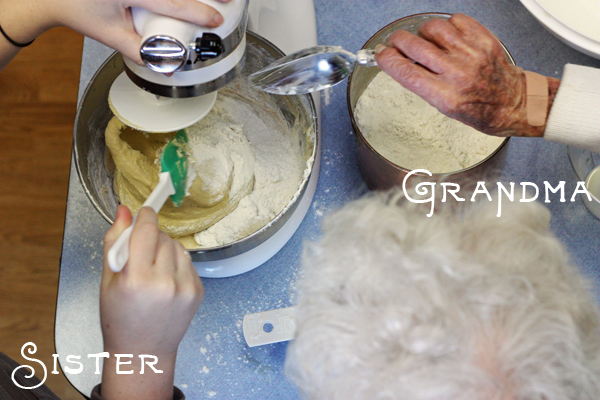
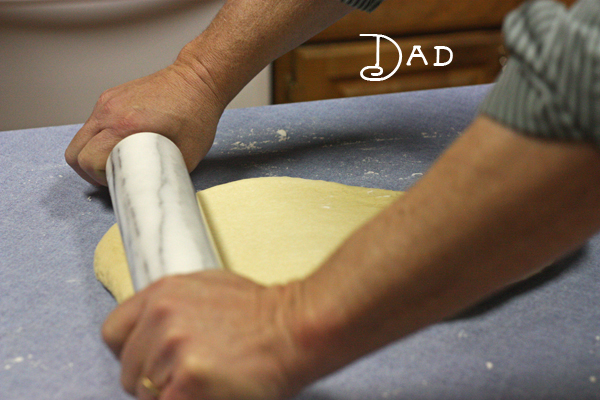
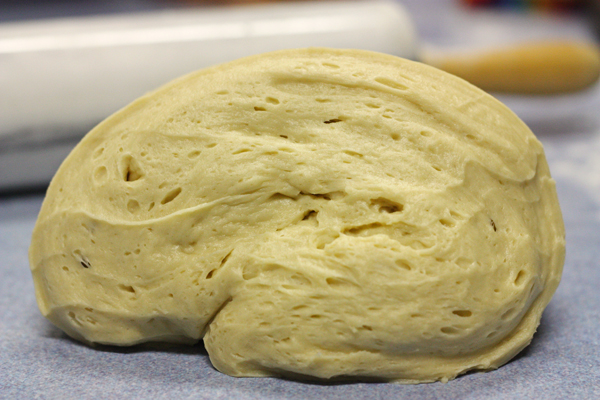
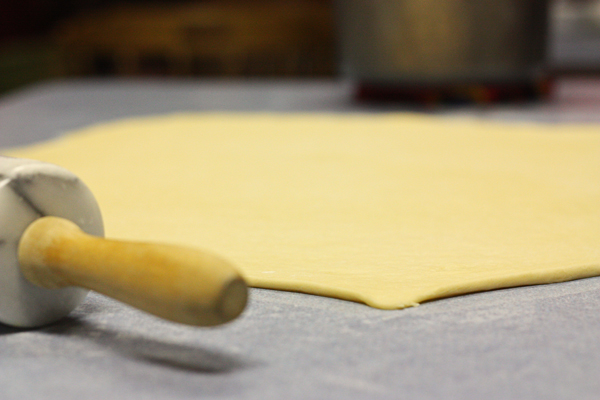
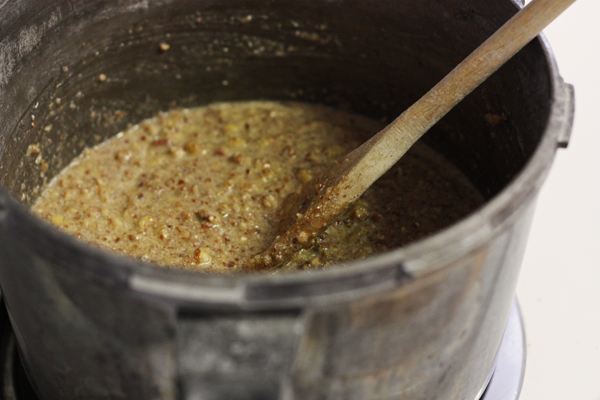
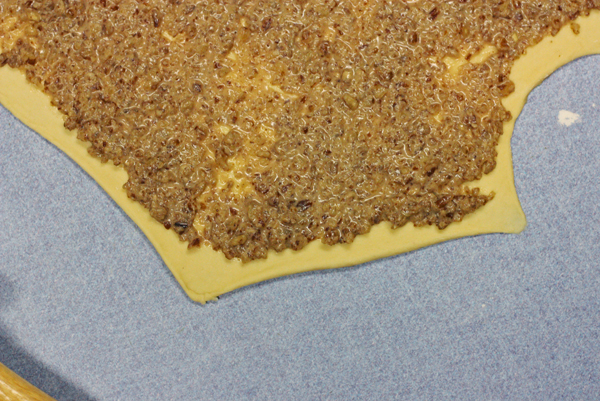
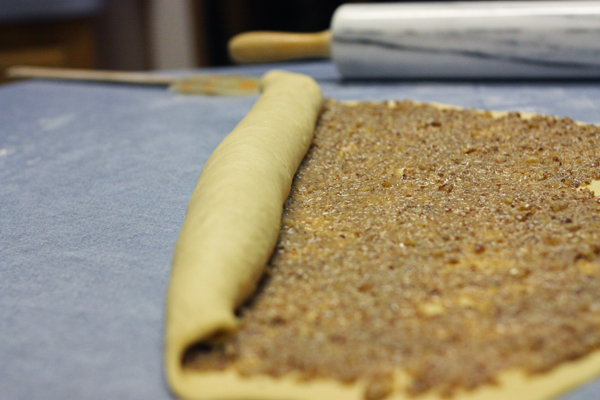
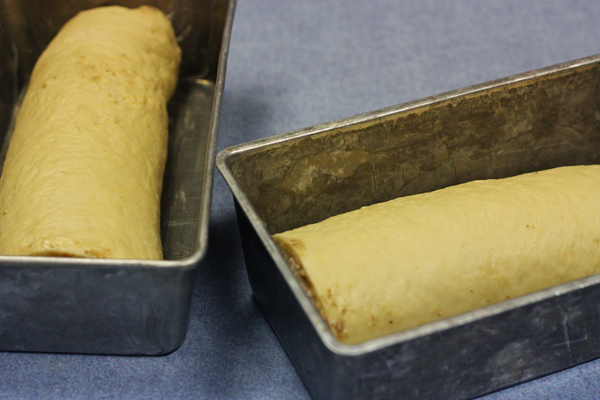
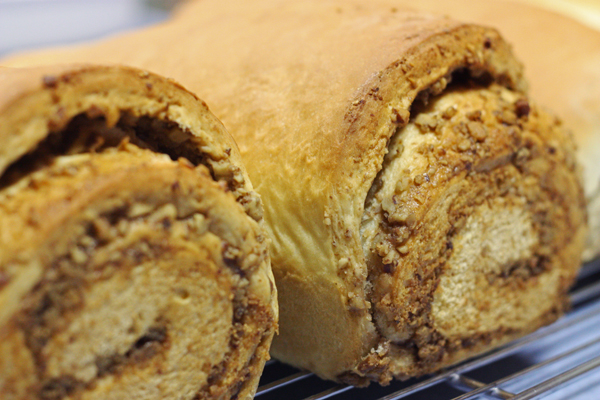
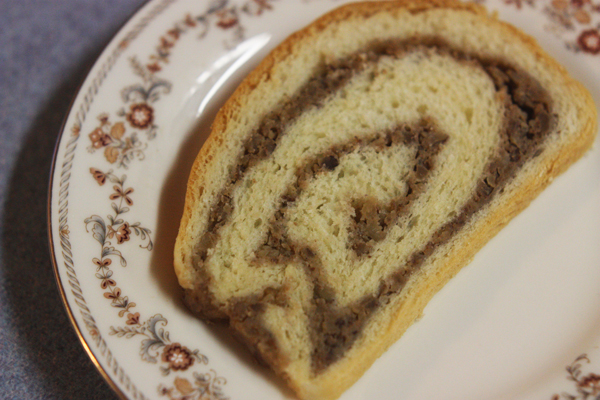
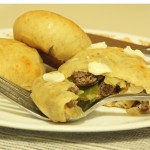

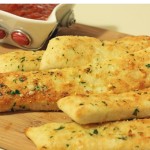
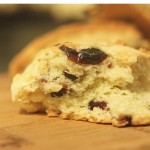
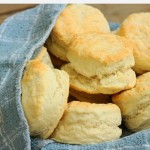
Suzy
January 12, 2012 @ 1:19 pm
Lovely……and so yummy, too! I especially like it warm, with or without butter!
Nancy
January 17, 2012 @ 8:41 am
Oh my, this looks like my grandmother’s coffee cake. I can’t wait to try it. Found your website following a link for hot chocolate on a stick and I think I’m in love.
Kristi @ 30 Pounds of Apples
January 17, 2012 @ 9:27 am
Welcome! I hope you enjoy reading, I sure do enjoy the cooking, the photography, and the writing! And of course, the sharing :)
Laura
January 17, 2012 @ 1:09 pm
I also found your blog from a link for hot chocolate on a stick, and I LOVE it. Not only do I want to try all your recipes, the photography and the blog itself are beautiful! Keep up the great work :)
Kristi @ 30 Pounds of Apples
January 17, 2012 @ 1:12 pm
I’m blushing! Yes, the hot chocolate stick post has gone a bit viral… I’m happy you’re here!